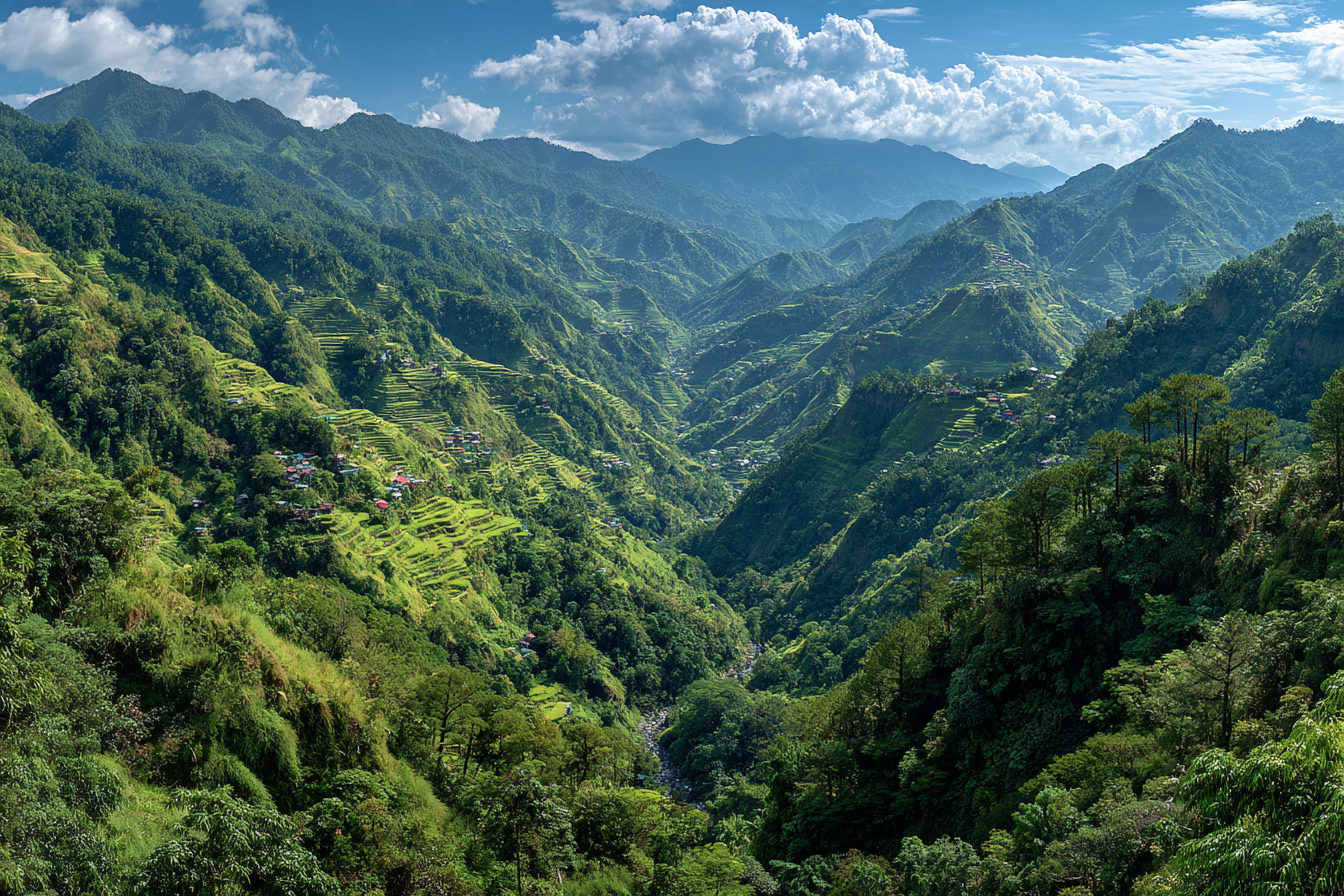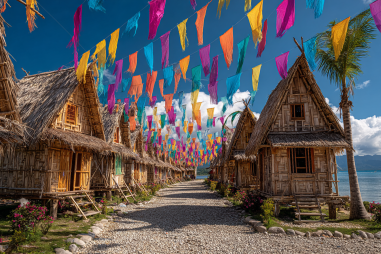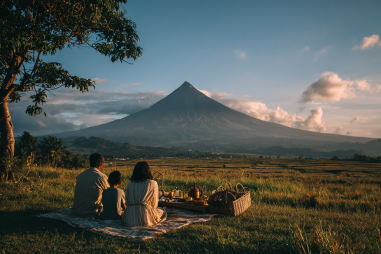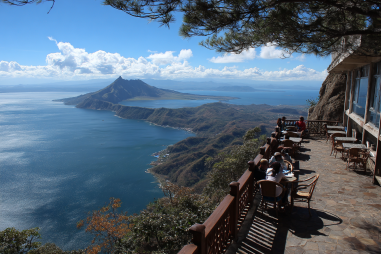When visiting the Philippines, few sights rival the breathtaking beauty of the Banaue Rice Terraces. Often referred to as the “Eighth Wonder of the World,” these terraces have been carved into the mountains over 2,000 years ago by the Ifugao people. To truly appreciate the scale and artistry of these lush green steps, the best approach is to explore the key viewpoints that offer sweeping panoramas perfect for capturing stunning landscapes. Whether you’re a passionate photographer chasing the perfect shot or a casual traveler seeking unforgettable vistas, Banaue’s viewpoints will not disappoint.
Top Recommended Banaue Viewpoints with Descriptions
Exploring Banaue’s viewpoints reveals a diversity of perspectives, each offering unique compositions of the rice terraces, mountain ranges, and local villages. Here are some of the best vantage points to check out:
- Banaue Viewpoint (Banaue Town Proper)
This is the most accessible viewpoint and probably the first stop for most visitors. From here, you can see the iconic sweeping terraces stretching out beneath the mountains. It’s a fantastic spot for wide panoramic shots, especially during sunrise when the morning light bathes the terraces in golden hues. The viewpoint is perched above the town, providing an easy-to-reach lookout with waves of terraces rolling outward on multiple sides.
- Batad Viewpoint
Batad is one of the most famous rice terraces villages and offers arguably the most dramatic and rugged landscapes. The viewpoint here overlooks a vast amphitheater-shaped cluster of terraces that descends steeply around the village. The dramatic cliffs and the waterfall nearby make this a favorite among photographers looking for dynamic and natural compositions. Note that Batad is a bit more remote, requiring a trek but rewarding visitors with an unmatched perspective.
- Bangaan Viewpoint
Bangaan village showcases terraces that are some of the best-preserved and most beautiful. The viewpoint here provides a slightly elevated angle, giving you a closer feel of the terraces’ intricate layering and ancient irrigation systems. The rustic charm and the local Ifugao houses add an authentic cultural dimension to your photos.
- Hungduan Viewpoint
Located near another traditional Ifugao community, Hungduan presents terraces nestled among lush mountains and forests. The viewpoint here is excellent for those wanting to capture a more natural, less touristy perspective of the terraces, complemented by the natural greenery around.
- Batad Saddle Viewpoint
For adventurers willing to hike a bit further, the Batad Saddle provides a higher altitude vantage point between Batad and Bangaan. This position offers an expansive view where you can capture both villages and the surrounding mountains in one frame.
How to Reach Each Viewpoint
While the Banaue viewpoints are stunning, getting to them requires some planning, especially for the more remote spots.
- Banaue Viewpoint: Located close to Banaue town proper, it can be accessed by jeepney, tricycle, or on foot within minutes from the town center. It’s suitable for all travelers and doesn’t require special hiking gear.
- Batad Viewpoint: To reach Batad, you’ll usually take a jeepney or van from Banaue to the village of Batad. The viewpoint itself involves a steep hike—approximately 30-45 minutes—downhill into the amphitheater terraces. Wear comfortable hiking shoes and prepare for some moderate trekking.
- Bangaan Viewpoint: Bangaan is accessible by jeepney or van from Banaue, followed by a short walk to the viewpoint. The terrain is relatively easier compared to Batad, making it accessible for a wide range of travelers.
- Hungduan Viewpoint: Getting to Hungduan might involve private transportation or joining a tour since public transport options are limited. If you’re hiking from Banaue or Batad, it can take several hours, so be sure you’re adequately prepared.
- Batad Saddle Viewpoint: Reachable by a challenging hike from Batad or Bangaan, the trek can take around 1 to 2 hours via rugged trails. Make sure to bring water, snacks, and sturdy footwear.
Best Time of Day for Photography
Lighting can make all the difference when capturing Banaue’s landscapes. Many photographers agree that early morning, just after sunrise, offers the best natural lighting. The dawn casts soft, warm light that gently illuminates the terraces and the surrounding mountains without harsh shadows. Mornings also tend to have less haze and cooler temperatures, creating crisp and vibrant photos.
Late afternoon, particularly the golden hour an hour or so before sunset, is another fantastic time for photography. The terraced fields glow under the warm sunrays, and the skies often display brilliant colors that add depth and mood to images.
Avoid the midday sun if possible, as the harsh light can flatten the textures and call attention away from the intricate layers of the terraces. Additionally, visiting just after the rainy season or during the planting and growing cycle ensures the rice terraces boast vivid green colors.
Tips for Drone and Landscape Photography
Drones are a wonderful tool to capture Banaue’s rice terraces from breathtaking aerial perspectives, but there are some important considerations:
- Check local regulations and permissions. Some areas may require permits for drone flying, especially near protected cultural sites or communities.
- Respect privacy and cultural sensitivities. The Ifugao communities are proud of their heritage. Always ask permission if flying near villages and be mindful of noise pollution.
- Bring extra batteries and memory cards. You’ll want plenty of backup as the beauty of the terraces encourages extended shooting sessions.
- Use a polarizing filter for ground-based cameras. This reduces glare and enhances the natural colors of the rice terraces, especially when photographing water-filled paddies.
- Experiment with different angles and focal lengths. Wide angle lenses capture the scale, while zoom lenses can highlight intricate details or local life.
Local Guides and Viewpoint Fees
Hiring a local Ifugao guide is highly recommended, especially for trekking to Batad, Bangaan, or Hungduan viewpoints. Guides provide invaluable knowledge about the terraces’ history, culture, and sustainable farming techniques, and they help navigate the sometimes challenging terrain safely.
Some viewpoints, particularly those on private land or in more secluded villages, may charge a small fee or donation (commonly around PHP 50-100) for maintenance or guide services. It’s best to carry small bills as change can be difficult. Engaging guides not only enriches your experience but also supports the local communities economically.
Safety Advice and Amenities
When visiting Banaue’s viewpoints, safety and preparation are essential:
- Wear sturdy footwear. Trails can be slippery or uneven, especially after rain.
- Bring water and light snacks. Some viewpoints lack nearby restaurants or shops.
- Protect yourself from the sun. Use sunscreen, hats, and sunglasses since many viewpoints have little shade.
- Keep your belongings secure. While Banaue is generally safe, crowded areas may attract petty theft.
- Follow local guidelines. Stick to marked trails and avoid disturbing the terraces or sacred areas.
- Restrooms and convenience stores are mostly available in Banaue town but scarce at remote viewpoints, so plan accordingly.
Maximizing Your Experience with Banaue’s Panoramas
Visiting Banaue’s viewpoints offers more than just postcard-worthy photos; it’s an immersive cultural and natural journey into one of the Philippines’ most treasured landscapes. By exploring different lookout points, rising early to catch the soft dawn light, and perhaps even flying a drone responsibly, you’ll gain a fuller appreciation of the scale and heritage embodied by the rice terraces. Taking time to engage local guides and respecting the environment and communities ensures a meaningful trip that supports sustaining this natural wonder for future generations. So whether you’re a shutterbug or just in awe of nature’s tableau, Banaue’s best viewpoints promise memories and images that will last a lifetime.







